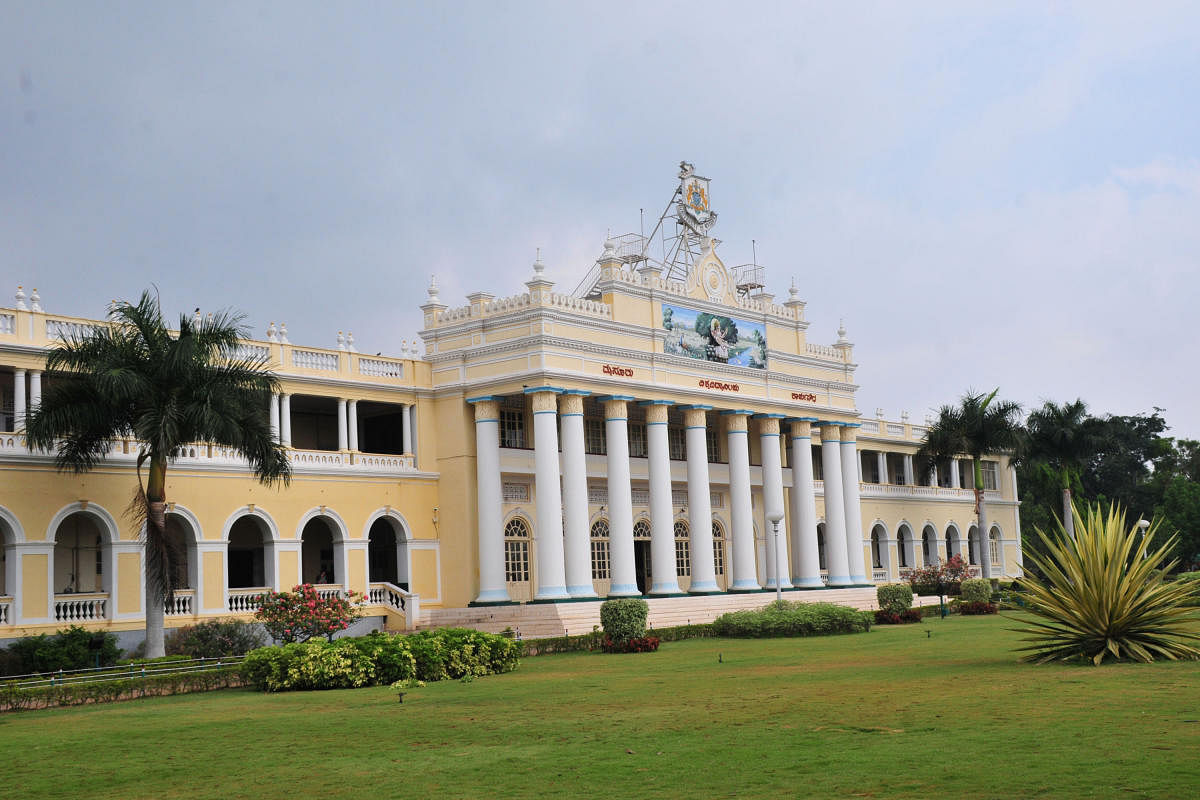
Karnataka is witnessing a debate as to whether the 100-year-old Mysore University (or UoM) be renamed after its pioneer ruler Nalvadi Krishnaraja Wadiyar of Old Mysore Princely State. It got a fillip just before Dasara when the Rajmata of the royal family submitted a proposal to the chief minister. In 2014, the university syndicate had agreed upon the name change, but in vain.
This has opened up a debate but has not been able to analyse the issues involved in the larger perspective of the contemporary politics of renaming entities, which has become part of an ideological – part decolonisation and nationalist, part historical-communal project — at the national level. But the project to rename Mysore University falls into different category — it is a part of attempts to revive memories of a bygone princely state, particularly the ideal rule of Nalvadi Krishnaraja Wadiyar.
One can discern five projects in the politics of renaming. First is the narrative of decolonising the names of roads, streets, cities. Anything linked to colonialism is to be discarded. One can discern two simultaneous projects operating within this — one is indigenisation of names — thus Bangalore becomes Bengaluru, Trivandrum becomes Thiruvananthapuram; the second is the Hindutva project — in one form, correcting distorted original names and connecting them to an imagined past. Thus, Gurgaon becomes Gurugram, Simla could become Shyamala; in another form, it attempts to erase memories of post-colonial history, especially the ideas of secular, democratic India.
The demand to rename JNU after Subas Chandra Bose and Rajiv Gandhi Tribal University as Guru Gobind University are examples; a third part of this project is to erase anything connected to Muslim rulers of medieval and post-medieval history. Allahabad is now Prayagraj; the Mughal Sarai railway station is now Pandit Deen Dayal Upadhyaya station, Aurangzeb Road is APJ Abdul Kalam Road. In this historical-communal project, the cruellest colonialists are spared, such as Lord Curzon or Ravenshaw, both of whom have universities named after them.
A fourth project is an identity and subaltern project — universities and cities named after social reformers. Pune University becomes Savitribai Phule Pune University, Women’s University in Vijayapura is now Akkamahadevi University for Women.
The last project of renaming is recovering bygone memories. The demand for renaming Mysore University belongs to this project. Incidentally, two important, but overlapping, narratives are apparent in the case of Mysore University on the issue of conceptualising the rule of Nalvadi Krishnaraja Wadiyar, who ruled the princely state of Mysore between 1884 and 1940.
Both agree that Nalvadi’s rule was no less than an “ideal State”, he was eulogised as ‘Rajarishi’ and Gandhi called his state ‘Ramarajya’. Both narratives appreciate the major contributions of Nalvadi — he was instrumental in constructing a dam across Cauvery, introduced reservation for OBCs, established State Bank of India, and Bhadravati’s iron and steel factory, supported women’s education.
His state was the first to generate hydroelectric power in Asia and was credited with having the first bicameral representative assembly in India. He was instrumental in establishing Mysore University and he became the first chancellor of universities — Hindu Banaras University and Mysore University. At the same time, his Diwan, M Visveswaraiah, is credited with the overall progress of Mysore State, more than Nalvadi, which is now under scrutiny.
Meanwhile, an alternative history of Mysore is being constructed in which Mahishasura, popularly depicted as a great demon, is viewed as the first progressive ruler who belonged to OBC category and that the name Mysore came from him. Nalvadi’s rule was seen as an extension of such progressive rule. Here lies the politics of renaming — it is a part of countering, correcting historical mistakes and retrieving bygone memories of an “ideal State”.
On the contrary, critics say that while the university reflects the modern ideas of Nalvadi, changing the name, after 100 years of its existence, would adversely affect the identity of the university, which has passed through the stages of ‘Institute of Excellence’ to ‘University with Potential for Excellence’.
Its identity is not confined to Mysuru alone. Its contributions to social causes, social movements, scientific knowledge, creativity, rationalism, philosophy, tolerance, alternative thinking, new ideas, intellectual discourses are well known beyond the boundaries of the country.
Internationally-acclaimed scholars, teachers, scientists, intellectuals have served or studied in this university, with many of them receiving national and international awards as Jnanapeeta, Padma Bhushan, Bharat Ratna, Sahitya Academy award or the honorific ‘Rashtra Kavi’. All this would become bygone history, while rebuilding its new identity would take many years.
The project of recovering bygone memories of an ideal princely rule is not a bad idea by itself, but it would dent the vision and ideas of the very founder of the university, Nalvadi Krishnaraja Wadiyar. In the midst of multiple opposing projects of renaming, it will be prudent to retain the existing name of Mysore University.
(The writer is currently Special Officer of the proposed Raichur University)